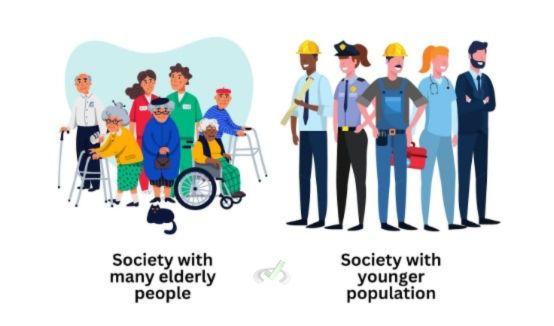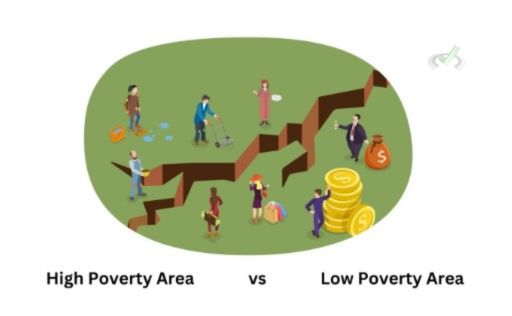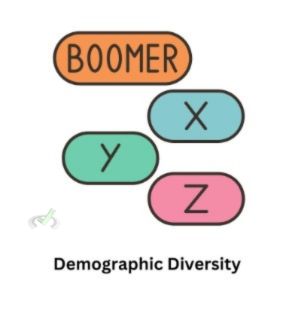Have you ever filled out a survey or job application? You probably answered questions about your age, gender, race, or income. These questions gather demographic information.
Demographics are facts about groups of people. Understanding demographics helps us learn how different groups interact and how social policies affect them. Let's explore why demographic categorization is important in sociology.
II. Introduction to Demographics in Sociology
Demographics are facts about people in a population. These facts include age, gender, race, income, education, and jobs. Studying demographics helps sociologists understand a population's makeup and spot patterns and trends. This information is gathered through censuses and surveys.
Key Concepts:
- Age: How long someone has lived. It helps understand how different age groups impact society.
- Gender: Roles and behaviors that society considers appropriate for men and women.
- Race and Ethnicity: Categories based on physical traits and cultural background. These affect social experiences.
- Income: The amount of money people or households make. It affects their access to resources and quality of life.
- Education: The level of schooling people have completed. It impacts job opportunities and social status.
III. Components of Demographics
Demographics include several vital parts that sociologists study to understand populations better:
Age

Age distribution shows the number of people in different age groups. For example, a society with many elderly people might need more healthcare services. Meanwhile, a society with many young people might focus on education and jobs.
Gender
Gender demographics show the roles and expectations for men and women. This helps find inequalities and create fair policies.
For example, studying gender pay gaps can lead to fairer pay practices. Gender data comes from surveys and records like birth certificates.
Race and Ethnicity
Race and ethnicity help us understand social diversity and tackle discrimination. Different groups have unique experiences and challenges.
For example, policies to reduce racial discrimination in housing and jobs can make society fairer. This data comes from self-reports in surveys and censuses.
Income

Income levels show economic well-being and social inequality. Analyzing income helps understand poverty and wealth distribution.
For example, areas with high poverty can get more resources and aid. Income data is collected through surveys and tax records.
Education
Educational levels are linked to job opportunities and health. Studying education shows disparities and helps improve access.
For example, ensuring quality education for all can enhance social mobility. Education levels are reported in surveys and school records.
IV. The Role of Demographics in Shaping Society
Demographics shape social policies and programs. They provide data to understand social trends and meet the needs of different groups. Here’s how demographics impact some areas:
Healthcare
Age, gender, and income data help plan healthcare services. For example, knowing the age distribution helps predict healthcare needs, like services for the elderly. Policies can be made to prepare healthcare systems for changes.
Education
Understanding education levels helps design effective programs. Areas with low literacy rates might need adult education, and schools can tailor programs to meet diverse needs.
Employment
Job policies and programs use data about age, gender, and education. For example, training programs can help young adults or women return to work. This ensures equal job opportunities for all groups.
Urban Planning
Demographic information is vital for planning cities. It helps design infrastructure for diverse populations. For example, knowing population density helps plan public transportation. Urban planners use this data to create livable cities.
V. Demographic Diversity and Social Interaction
Demographic diversity means having different demographic groups in a population. Understanding this diversity promotes social harmony and solves social issues. Here's why it matters:

Promotes Inclusive Policies
Recognizing diversity helps create fair policies. Considering the needs of all age groups can lead to better services. Policies can ensure that all groups benefit equally.
Enhances Social Cohesion
Respecting demographic diversity builds strong social bonds. For example, promoting workplace diversity enhances teamwork and innovation. This creates a harmonious and productive environment.
Reduces Inequality
Understanding differences helps tackle social inequalities. Targeted programs can support disadvantaged groups, like minorities or low-income families. This creates a fairer society.
VI. Bridge/Overlap
Studying demographics goes beyond understanding population facts. It connects with other sociology topics like social stratification, social mobility, and social change. Let’s explore these connections:
Social Stratification
This is the ranking of people in a society based on wealth, race, and education. Demographics help analyze these ranks and their effects. For example, income data shows economic inequalities and guides policies to address them.
Social Mobility
This is the ability to move up or down the social ladder. Demographic data on education and income are vital for studying mobility.
Understanding these helps remove barriers and promote equal opportunities. Scholarships and training programs can help lower-income students get better jobs.
Social Change
Demographic trends drive social change. Changes in age, migration, or education can shift social structures and policies.
For example, more elderly people might receive better retirement benefits and healthcare. Knowing these trends helps policymakers manage changes.
Health and Demographics
Health outcomes link to age, gender, and income. Understanding these links helps design public health policies.
For instance, targeting health education to specific groups improves outcomes. Public health officials use demographic data to reduce health disparities and improve community health.
VII. Wrap-Up and Key Terms
Let’s summarize what we’ve covered about demographics:
- Demographics are facts about populations.
- Key components are age, gender, race and ethnicity, income, and education.
- Demographics impact healthcare, education, employment, and urban planning.
- Understanding demographic diversity promotes inclusive policies social cohesion, and reduces inequality.
- Demographics connect with social stratification, social mobility, social change, and health.
VIII. Practice Questions
Sample Practice Question 1
What is the primary purpose of studying demographics in sociology?
A. To design better art and music
B. To understand population characteristics and trends
C. To produce more material goods
D. To develop new languages
Ans. B
Studying demographics helps sociologists understand who makes up a population and spot patterns and trends. This is crucial for analyzing social dynamics and planning policies.
Sample Practice Question 2
Which of the following is an example of demographic data?
A. Personal opinions on politics
B. Number of people in different age groups
C. Preferences for certain types of food
D. Favorite sports teams
Ans. B
Demographic data includes facts about populations, like age, gender, race, income, and education levels.







 To help you achieve your goal MCAT score, we take turns hosting these
To help you achieve your goal MCAT score, we take turns hosting these 





















 reviews on TrustPilot
reviews on TrustPilot